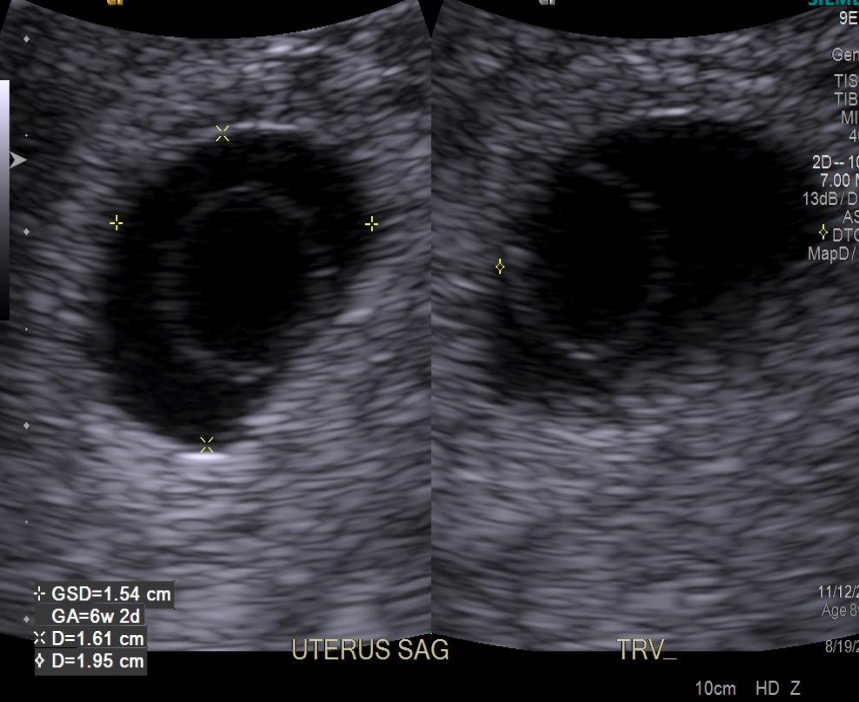Playlist
Show Playlist
Hide Playlist
Substance Abuse in Pregnancy: Alcohol Abuse and Illicit Drugs
-
Slides SubstanceAbuseinPregnancy Obstetrics.pdf
-
Download Lecture Overview
00:00 Okay, so alcohol abuse. So, there are some adverse outcomes and we’re going to talk about each of these in a little bit of detail: fetal alcohol syndrome, CNS abnormalities, and then fetal growth restriction. So, with fetal alcohol syndrome, there are craniofacial features that you need to make sure you’re very well aware of because you will see these on the exam. These are high yield. So, a short palpebral fissure, flat midfaces, long and flat philtrum and then also this very thin vermillion border of the upper lip. You can see all of these things demonstrated here in this picture. You can also see a small head circumference, small eye opening, small midfaces and again that thin upper lip. So, these are some other faces of fetal alcohol syndrome. 00:52 In the first picture here, we can see the midfaces that’s really, really flat. In the second picture here, we can see the eye changes that we discussed and in the third picture, this is a really good example of that thin vermillion border of the lip. So, there are 2 other adverse outcomes that we see in pregnancy when women drink alcohol. One is CNS abnormalities and this is mostly manifest in the way of mental retardation and that’s seen throughout the life of the child and the other is fetal growth restriction. Now, it’s important to note that there has no safe lower limit that has been established for alcohol use in pregnancy. Therefore, our stance is that women should not drink alcohol in pregnancy; otherwise, they may experience any of these adverse outcomes that we’ve discussed. So, every patient that comes in should be screened for alcohol use in pregnancy. Not every patient is going to come in admitting that they have a problem nor will they understand that they have a problem. So, a quick and easy way to assess if there’s an issue is the Mnemonic TACE. Now, each of these categories has a score and if a patient scores 2 or more in any of the screening, then they screen positive for alcohol abuse. So, the first question is tolerance. So, how many drinks do you need to feel buzzed or to get drunk? If a patient needs more than 2 drinks then that is a point of 2. So, annoyance means do you ever get annoyed when someone asks you about your drinking? That’s a score of 1 if the answer is yes. C stands for cut down. Have you ever tried to cut down the amount that you’re drinking? If the answer is yes, that’s also a score of 1. E stands for eye opener. So, have you ever needed a drink in the morning to get rid of a hangover? If the answer is yes for that, that’s also a 1. So, which of the following is a feature of fetal alcohol syndrome: fetal hydrops, palmar crease, rocker bottom feet, or short palpebral fissure? So, when thinking about the things that we just discussed, the answer is D, short palpebral fissure and again, you can see it demonstrated really well in this picture here. Okay, so moving on to illicit drugs in pregnancy. So, some of the ones that we think of are cocaine, heroin, amphetamine, and prescription drug abuse and there are several different adverse outcomes that can happen in any of these when they are used in pregnancy: fetal growth restriction, placental abruption and fetal demise are the most common. So, for patients that are using illicit drugs in pregnancy, there is a screening that we can use. This is called the 4 P’s. So, first P stands for parents. Did they have an alcohol or drug problem, meaning the parents. Next is partner, does your partner have a problem with alcohol or drugs? The next P is past. Have you had a problem with alcohol or drugs? Then the final P is present. 03:53 Do you currently have a problem with alcohol or drugs? Again, this is a way to find out if patients are using illicit drugs or if they’re at risk for using illicit drugs during the pregnancy. So, here's another question. When screening for substance abuse, which of the following questions can help determine if a patient is abusing prescription drugs: a) Do you get annoyed when someone asks you if you are on drugs? b) Have you ever been caught using drugs? c) Did either of your parents have trouble with drugs or alcohol? d) Do you know the effects of drugs in pregnancy? So, the answer is C. Remember, one of the P’s is asking about the parents’ history of alcohol or drug abuse.
About the Lecture
The lecture Substance Abuse in Pregnancy: Alcohol Abuse and Illicit Drugs by Veronica Gillispie, MD, MAS, FACOG is from the course Preconception Care. It contains the following chapters:
- Substance Abuse in Pregnancy Alcohol Abuse and Illicit Drugs in Pregnancy
- Illicit Drugs in Pregnancy
Included Quiz Questions
Which of the following is a characteristic craniofacial feature of a child with Fetal Alcohol Syndrome?
- Long and flat philtrum
- Large head circumference
- Wide set eyes
- Cleft palate
- Macroglossia
Which of the following is NOT a characteristic abnormality in a child with Fetal Alcohol Syndrome?
- Ataxia
- Intellectual disability
- Thin vermilion border of the upper lip
- Short palpebral fissure
- Microcephaly
What is the safe lower limit of alcohol intake during pregnancy?
- There is no safe lower limit. Patients should be advised not to drink alcohol during pregnancy
- Patients should be advised to have no more than one drink a day during pregnancy.
- Patients should be advised to not exceed 4 drinks a week during pregnancy.
- Patients should be advised that although an occasional glass of wine with dinner is okay during pregnancy, they should not make regular drinking a habit.
- Patients should be advised that they will not have any alcohol-related adverse outcomes as long as they are not getting "buzzed" or drunk while pregnant.
Your 32-year-old G4P3 patient comes to you for her first prenatal appointment at an estimated 22 weeks gestational age. She states that she drinks about 1 glass of wine with dinner a day to feel relaxed enough to go to bed after a stressful day of work. Otherwise, she has never experienced anyone ask her about her drinking, has never felt the need to cut down on her alcohol intake, and has never needed an "eye-opener" in the morning. Is the screening positive for alcohol abuse?
- No, she has no points on the screening test.
- Yes, she has a score of 1 on the alcohol abuse screening test.
- No, she only has a score of 1 on the alcohol abuse screening test.
- No, she only scores a 2 on the alcohol abuse screening test.
- Yes, she has a score of 2 on the alcohol abuse screening test.
Which of the following is known to put a patient at risk of using illicit drugs during pregnancy?
- Having a partner that uses illicit drugs
- Having no partner or parental support during pregnancy
- Smoking cigarettes during pregnancy
- Teenage pregnancy
- High socioeconomic status
Customer reviews
5,0 of 5 stars
| 5 Stars |
|
5 |
| 4 Stars |
|
0 |
| 3 Stars |
|
0 |
| 2 Stars |
|
0 |
| 1 Star |
|
0 |





